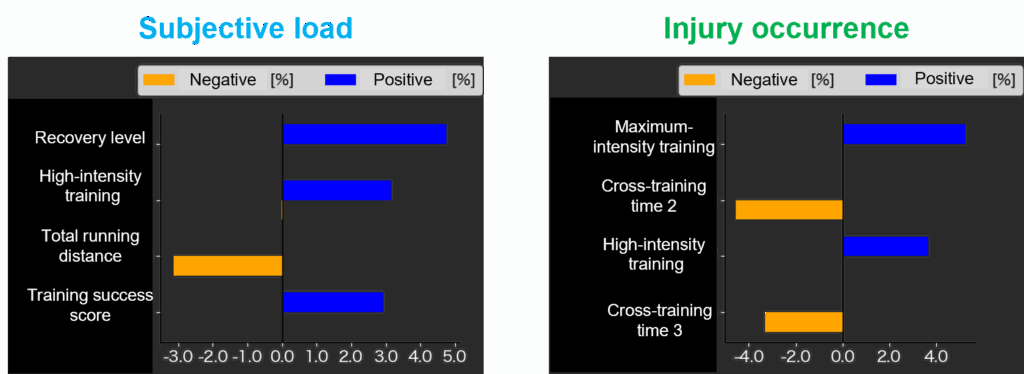Using Multi-Sigma®, we present a case study that analyzes the relationship between athletes’ subjective load and injury occurrence through its AI Chain Analysis feature.
1.Building an AI model for subjective load and injury occurrence using AI Chain Analysis
Using Multi-Sigma® and its AI Chain Analysis feature, we analyzed training logs recorded between 2012 and 2019 from a Dutch track-and-field team to derive insights for injury prevention. From 74 middle- and long-distance runners (47 men, 27 women), we built one AI model to predict subjective load from 62 training-related variables, and a second AI model to predict injury occurrence from 63 variables, including subjective load.

2. Prediction of Subjective Load and Injury Occurrence via AI Chain Analysis

3. Contribution Analysis with AI Chain Analysis
Using the contribution analysis feature, we examined the factors influencing subjective load and injury occurrence. As a result, high-intensity training and cross-training were identified as particularly important factors.

This analytical framework can serve as a practical tool for athlete condition management and injury prevention. It is well suited for automated day-to-day monitoring of training load and for the early detection of injury risk.
(Note1)Note: The data used in this analysis was processed and edited based on the data published in the article below, under Creative Commons Zero 1.0 Universal (CC0 1.0) license.
Dataset: https://www.kaggle.com/datasets/shashwatwork/injury-prediction-for-competitive-runners/data
(Note2) We used 1,000 training samples and 166 test samples.
